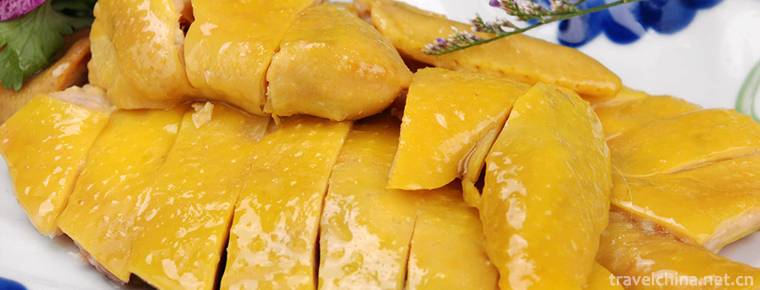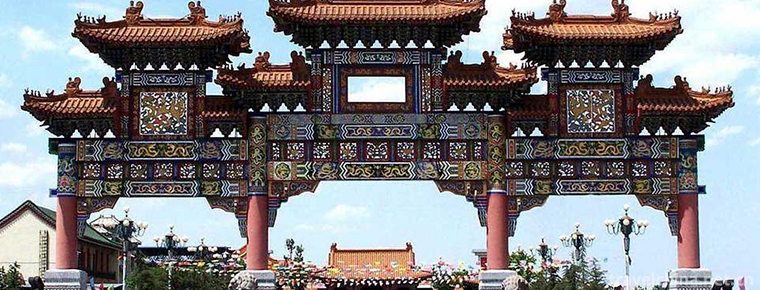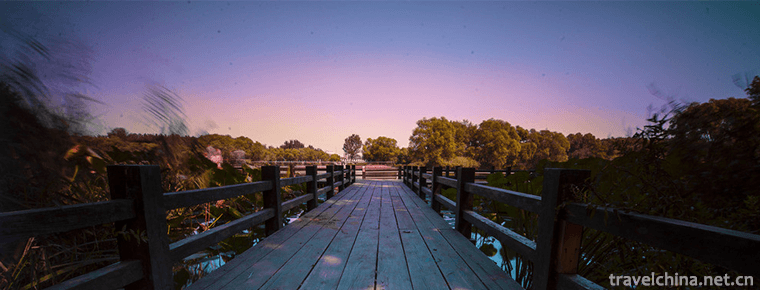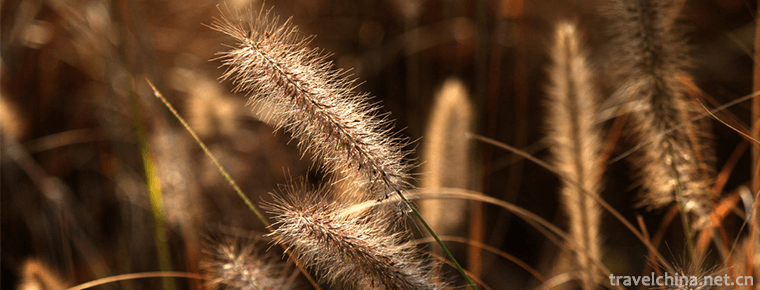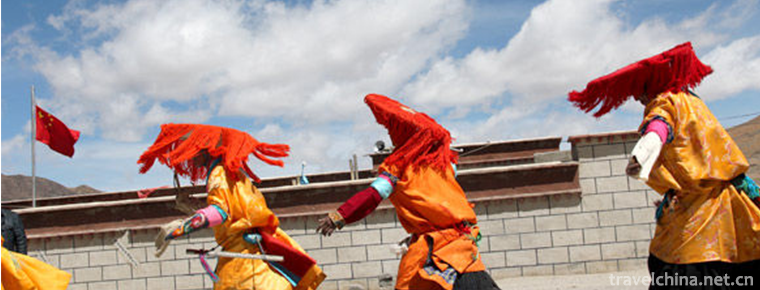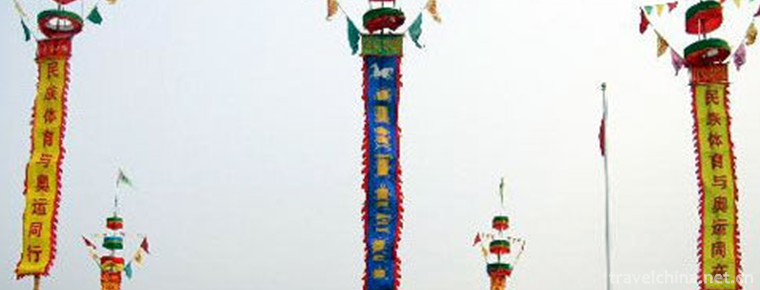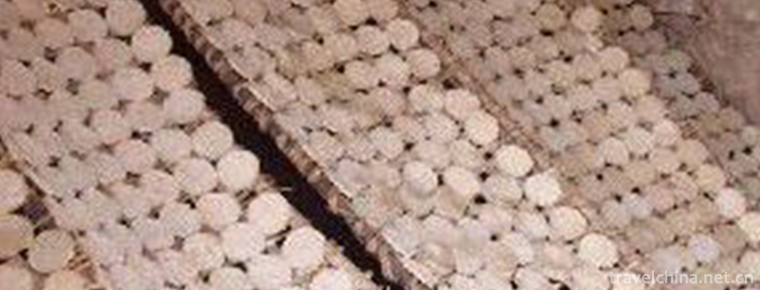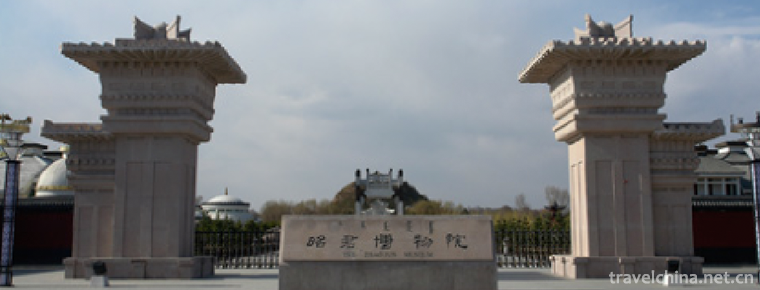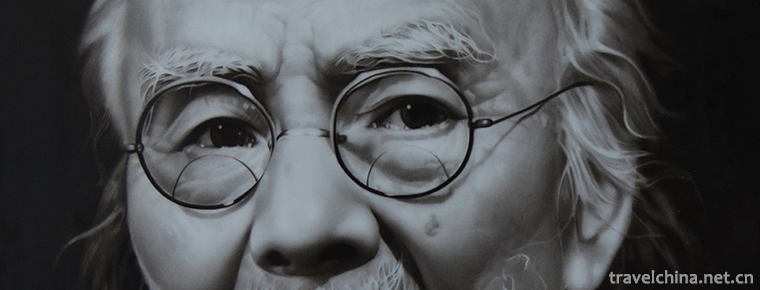Shijiazhuang Silk String
Shijiazhuang Silk String
Shijiazhuang silk string is also known as string tune, string tune, Hexi tune, small drum tune, Luoluo tune, daughter tune and so on. It is a local traditional drama in Hebei Province and one of the national intangible cultural heritage.
Shijiazhuang silk strings originated in the late Ming Dynasty and spread in most areas of Hebei Province and Eastern Jinzhong area and Yanbei area. Silk string opera can be divided into five routes according to its orientation, namely, the east, west, south, north and middle routes. The silk string in Shijiazhuang is "the middle route silk string". Shijiazhuang silk strings evolved from folk songs of Ming and Qing Dynasties, with unique singing voice, exciting melodious, generous and unrestrained.
On May 20, 2006, Shijiazhuang Silk String was approved by the State Council and listed in the first batch of national intangible cultural heritage catalogues, numbered IV-40.
historical origin
It is said that the Silk String Opera has a long history, but because it belongs to the pure peasant opera and has been living in the folk, it is difficult to define the specific age of the formation of the Silk String Opera precisely because of the lack of relevant information, especially official information. However, from the limited relevant information and the analysis of the evolution of the characteristics of the Silk String Opera, it can be inferred that the generation of the Silk String Opera will not be later than the end of the Ming Dynasty at the latest. Year.
As a local opera in Hebei Province, silk string was popular in the central and southern areas of Hebei Province and the eastern part of Baoding before liberation, as well as in the central and eastern parts of Shanxi Province, Jinzhong and Yanbei areas. The popular areas are as follows: Shijiazhuang as the center, Xianxian County in Cangzhou in the east, Gaoyang in Baoding in the east, Heshun, Jinyang and Pingding in Shanxi in the west, Hunyuan and Pingding in Shanxi in the north. Fanshi and Lingqiu areas; Shahe, Guangzong and Pingxiang County frontiers in Xingtai, Nanda.
However, due to various reasons, the unique ancient drama "silk string" did not develop with the pace of historical progress, but continued to shrink. By the beginning of liberation, the "five roads" had disappeared or basically disappeared, leaving only the "middle road" silk string with Shijiazhuang as the center, which had developed in the era of desolation. From the end of the Qing Dynasty to the beginning of the Republic of China to 1937, many silk string clubs emerged in various places. Some of them performed with the old tunes and Hebei Bangzi on the same stage. There were "three-in-one classes" and some of them also appeared "five-tune classes" singing random bullets and Peking Opera. But after the outbreak of the War of Resistance Against Japan, performances in various places fell into a low ebb. For the sake of livelihood, "Zhengding Hong" Liu Kuixian and "Pingshan Red" Feng Guangting and other artists created "Yushun Ban" on the basis of integrating the resources of silk string performances, which is a seasonal performing group. In order to expand the performance market and influence, they crowded into Shijiazhuang and entered the city. They restructured the theatre troupe, changed the original silver-clad system to dividend by shares, changed the seasonal performance to regular performance, and changed the name of "Yushun Ban" to "Longshunhe Opera Society". Although their perennial performances in the city have enlarged their influence and increased their popularity, they are limited to the area of Shijiazhuang. Hence, Hebei Province's Silk String Opera is now also collectively known as Shijiazhuang's Silk String Opera.
After the liberation of Shijiazhuang in 1947, silk string opera ushered in the spring of development. The revival and development of this period continued until the "Cultural Revolution".
Premier Zhou has watched silk string performances five times. But at the beginning of the Cultural Revolution, the traditional theatre was banned and the brilliant period of silk string which lasted for more than ten years was finally forced to come to an end.
The "Cultural Revolution" began first in the cultural and artistic circles, so the cultural and artistic circles are bound to be disaster-stricken areas. Traditional operas considered to be "emperors, generals, gifted men and beautiful women" have occupied the socialist stage and have been banned since the beginning of 1966. The same is true of silk strings, which plunged from their glorious heyday to the bottom of stagnation.
In October 1976, the Gang of Four was crushed. At the same time, the end of the "Cultural Revolution" was declared. History turned a new page and another spring of culture and art came. The Party and the government attached great importance to it. From December 8 to December 29, 1977, Hebei Province held a provincial performance conference. This performance of literature and art has played a very important role in promoting the liberation and recovery of opera. From this, the revival of the Silk String Opera in Shijiazhuang has begun. Whether in the city or in the countryside, the Silk String Opera is singing again.
In the 1990s, especially in 1992, with the establishment of the socialist market economic system, Shijiazhuang Silk String declined again to a low ebb, and wandered in the low ebb for a long time. Professional theatre troupes once entered a dilemma.
Representational repertoire
Shijiazhuang Silk String has more than 500 traditional dramas. The representative dramas include Empty Printing Box, White Loot, Little Two Sisters Dreaming, Running My Son-in-law, Jinling Plan, Yangjia General, Candle Hate, Life and Death Card, Zongze and Yuefei, etc.
Distribution area
Shijiazhuang silk strings are popular in most areas of Hebei Province, Eastern Shanxi Province and Yanbei region.
Inheritance and Protection
Inheritance value
Shijiazhuang silk string is an outstanding representative of Yanzhao culture. It has a strong creativity and occupies a higher position in Hebei local operas. It has the theory of "Kungao silk without separation" and "one Kungao silk string with two high schools and three silk strings".
Silk string is a relic of Yuan Opera. Based on Xiaoling of Yuan Dynasty and folk songs of Ming and Qing Dynasties, it evolved from the performance and singing characteristics of "playing puppets" popular in the middle and southern part of Hebei Province in the late Ming Dynasty. The unique singing methods of real-voice singing and fake-voice dragging, the singing and pronunciation characteristics based on local accents and its special performance all have unique artistic value.
Silk strings have strong regional and cultural characteristics and occupy a higher position in all kinds of operas. It is said that "one Kunqu (qu) two Gao (qiang) three silk strings" can only be performed by other kinds of operas after Kunqu, Gaoqiang and silk strings are opened Gong (commonly known as "tong") when performing at the same time in many kinds of operas. After the mid-Qing Dynasty, the silk strings and Kunqu Opera, Gaoqiang Opera and Hebei Ran Tan were called "Shenliu", while other operas were called "Hailiu". During the Xianfeng period, the silk strings of Zhonglu, popular in Shijiazhuang and Zhengding, often performed in the same stage with the old tunes, so that the old tunes of plays and music spread to the silk strings. Old tunes are also influenced by silk strings, enriching the repertoire and musical singing.
The silk string is a mixed tone of the melody and the board cavity. Its music color is very rich. The singing method of real voice singing and falsetto dragging tone has its own charm. The singing method is based on local accents, with strong regional characteristics, strong adaptability and affinity. Superior and unique stunt performance shows its artistic pursuit of paying equal attention to singing and doing.
Heritage figures
Bian Shusen, male, Han nationality, born in December 1940, is from Gaocheng County, Shijiazhuang City, Hebei Province. He lives in Shijiazhuang City, Hebei Province. In February 2008, Bian Shusen was selected as the representative successor of the second batch of national intangible cultural heritage projects and declared in Shijiazhuang City, Hebei Province.
Zhang Helin, male, Han nationality, born in December 1944, is from Anxin County, Baoding City, Hebei Province. He lives in Shijiazhuang City, Hebei Province. In February 2008, Zhang Helin was selected as the representative successor of the second batch of national intangible cultural heritage projects and declared by Shijiazhuang City, Hebei Province.
Anluchang, male, Han nationality, born in October 1937. In June 2009, Anluchang was selected as the representative successor of the third batch of national intangible cultural heritage projects and declared by Shijiazhuang City, Hebei Province.
protective measures
In 2005, Shijiazhuang Silk String became the first batch of national intangible cultural heritage. The Shijiazhuang Municipal Cultural Bureau clearly put forward that Shijiazhuang Silk String should be the focus of cultural construction with Shijiazhuang characteristics, strengthen support and fully protect and promote it. Shijiazhuang Silk String and Municipal Art Research Institute have carried out in-depth investigation, excavation and collation of silk string related materials, sorting out more than 200 traditional scripts and more than 50 scripts entered by computers; Shijiazhuang Silk String Theatre Troupe has completed the audio and video publication of eight major silk string plays; Shijiazhuang Silk String Excellent Drama Selection and Shijiazhuang Silk String Music Compendium of the Municipal Art Research Institute are also in progress. In tension. However, the government's attention is still insufficient. The relevant government departments should increase financial input, improve the working environment and performance conditions of the theatre troupe, increase the research on silk string theory, strengthen the education of silk string culture, establish the management system of protecting silk string, and provide preferential policies for the admission of students to the silk string art school.
social influence
Important performances
On November 18, 1957, on the recommendation and invitation of Premier Zhou, the Shijiazhuang Silk String Theatre Troupe performed for the central director of Huairen Hall in Zhongnanhai. The play was "pulling an umbrella". In addition to Premier Zhou, there were other national leaders such as Zhu De, Deng Xiaoping, Chen Yun, Li Xiannian, He Long, Ye Jianying, Nie Rongzhen, Ulanfu, Li Jishen, He Xiangning, Zhou Yang, Qian Junrui and so on.
On February 14, 1958, Premier Zhou Enlai led a Chinese political delegation to visit the DPRK. The Shijiazhuang Silk String Theatre Troupe accompanied the volunteers to the DPRK. The troupe lasted more than 40 days and performed more than 30 performances in Korea.
In 1961, the Shijiazhuang Silk String Theatre Troupe went to Henan, Jiangsu and Shandong to perform in Anyang, Xinxiang, Zhengzhou, Luoyang, Shangqiu, Kaifeng, Xuzhou, Jinan and Dezhou for four months.
In early September 1981, the Shijiazhuang Silk String Theatre Troupe, together with the newly compiled traditional opera Huacang Hate, made its first performance in Beijing after the Cultural Revolution. Beijing TV and Beijing Radio have broadcasted many times, People's Daily, Beijing Evening News, Worker's Daily, Beijing Drama Daily and other major newspapers and magazines have published commentary articles by Li Wanchun, Lantianyo, Ren Guilin, Wei Xikui, etc. They have given a high appraisal to the play and its actor Anluchang.
In May 1986, Shijiazhuang Silk String Opera Troupe performed for the third time in Beijing. This time in Beijing, the troupe brought two plays, one is the modern play "The Secretary with a Lame Leg Up the Mountain", and the other is the new traditional play "Zong Ze and Yue Fei", which lasted about ten days. Among them, on May 19, they performed the modern play "The Lame Leg Secretary Uphill" for the Central Leading Comrade in Huairen Hall, Zhongnanhai.
From November 25 to 26, 2007, in order to celebrate the 60th anniversary of the establishment of the Shijiazhuang Silk String Opera Troupe, commemorate the 50th anniversary of Premier Zhou Enlai's inscription for the Shijiazhuang Silk String Opera Troupe and the 50th anniversary of the first performance of the Shijiazhuang Silk String Opera Troupe in Beijing, the Shijiazhuang Silk String Opera Troupe entered the auditorium of the CPPC This time, two plays were brought to Beijing, one is the traditional silk string classic drama Empty Printing Box.
Derivative works
In order to enhance the popularity of Shijiazhuang Silk String Opera, an ancient opera, and let more people know and enjoy the charm of Silk String, in 1960 Changchun Film Studio will make "Empty Printing Box" starring Wang Yongchun into a film, which will be released nationwide. The film art film "Empty Printing Box" pushed Shijiazhuang Silk String Opera, a local opera, to the whole country.
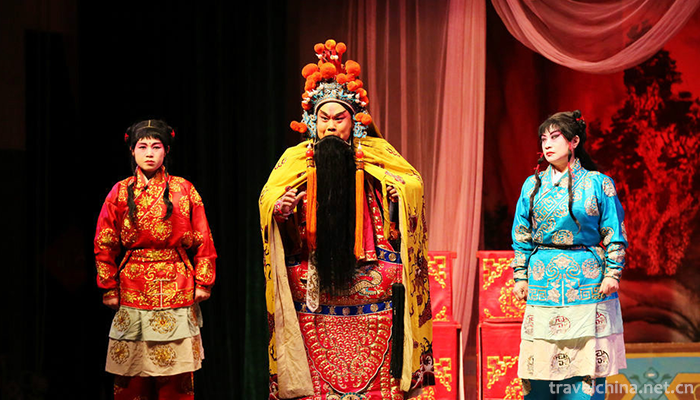
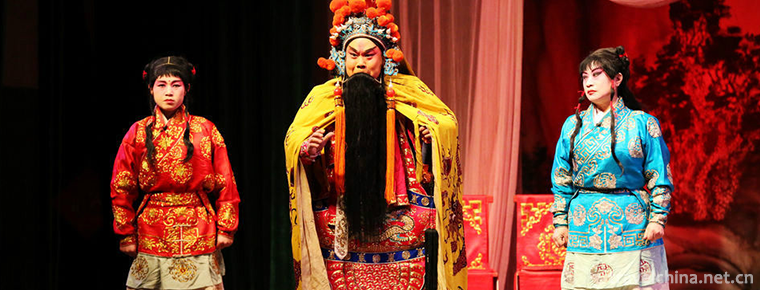
Shijiazhuang Silk String
-
White cut chicken
White cut chicken, also known as white cut chicken, is the most common dish in Guangdong cuisine. It is a kind of chicken dipping. Its characteristics are simple and easy to prepare, without batching
Views: 262 Time 2018-11-02 -
Dongshan Cultural Garden
At the East Gate of Wu'an City, there is a beautiful landscape of lakes and mountains, with beautiful gardens scattered in pavilions and pavilions - Dongshan Cultural Park.
Views: 138 Time 2018-12-19 -
Chaoyang Park Beijing Sun Park
Chaoyang Park in Beijing is a comprehensive and multi-functional cultural recreation and entertainment park with gardening as the main part. It is the largest city park within the Fourth Ring Road in
Views: 138 Time 2019-01-05 -
Tongzhou Forest Park of Grand Canal
Tongzhou Forest Park of the Grand Canal is located on both sides of the North Canal of Tongzhou New Town, Beijing. It starts from Luyang Bridge on the Sixth Ring Road in the north and Wuyao Bridge in
Views: 109 Time 2019-01-07 -
Dan GA harmonics
Jia Hao, which means "grand singing and dancing performance" in Chinese, is a kind of collective dance, usually performed in the Tibetan New Year and major festivals every year. Men
Views: 367 Time 2019-04-25 -
Quzi Opera
Quzi Opera, the traditional drama of Dunhuang City, Baiyin City, Huating County and Xinjiang Production and Construction Corps in Gansu Province, is one of the national intangible cultural heritage.
Views: 145 Time 2019-06-11 -
Central Crossing of Flyover
Zhongbian is a local traditional folk acrobatics in Beijing. Beijing's overpass is a prosperous and lively civilian market with a long history, well-known at home and abroad. During the reign of Emper
Views: 262 Time 2019-06-21 -
Soil alkali firing technology
On June 7, 2008, the soil-alkali firing system was approved by the State Council and listed in the second batch of national intangible cultural heritage list.
Views: 406 Time 2019-06-23 -
Legend of Wang Zhaojun
Wang Zhaojun's legend is one of the local folklores in Xingshan County, Hubei Province. Wang Zhaojun, one of the four beautiful women in ancient China, is the embodiment of beauty, the messenger of pe
Views: 130 Time 2019-06-26 -
Yibin university
Yibin College is located in Yibin City, Sichuan Province, which is a famous national historical and cultural city. It is a full-time comprehensive undergraduate college with beautiful environment and
Views: 185 Time 2019-08-31 -
Qi baishi
Qi Baishi (January 1, 1864 - September 16, 1957), formerly known as Zhi Zhi, the word Wei Qing, No. Lanting Pavilion, later renamed Huang, the word is on the edge, the number of Bai Shi, white stone m
Views: 315 Time 2019-09-04 -
Suining economic development
In 2019, Suining's GDP will reach 134.573 billion yuan, an increase of 8.1% over the previous year (the same below) at comparable prices. Among them, the added value of the primary industry was 18.521 billion yuan, an increase of 2.7%; the added value of the
Views: 370 Time 2020-12-16
